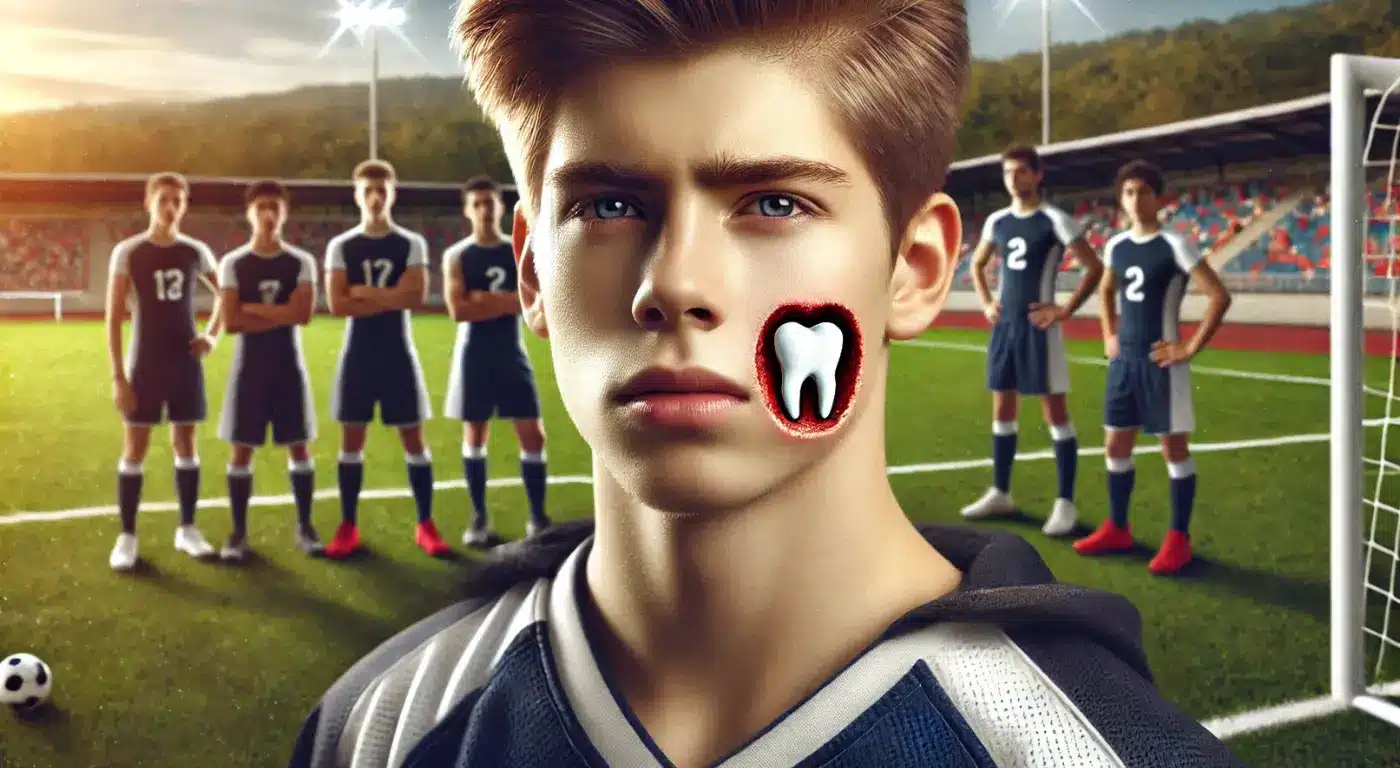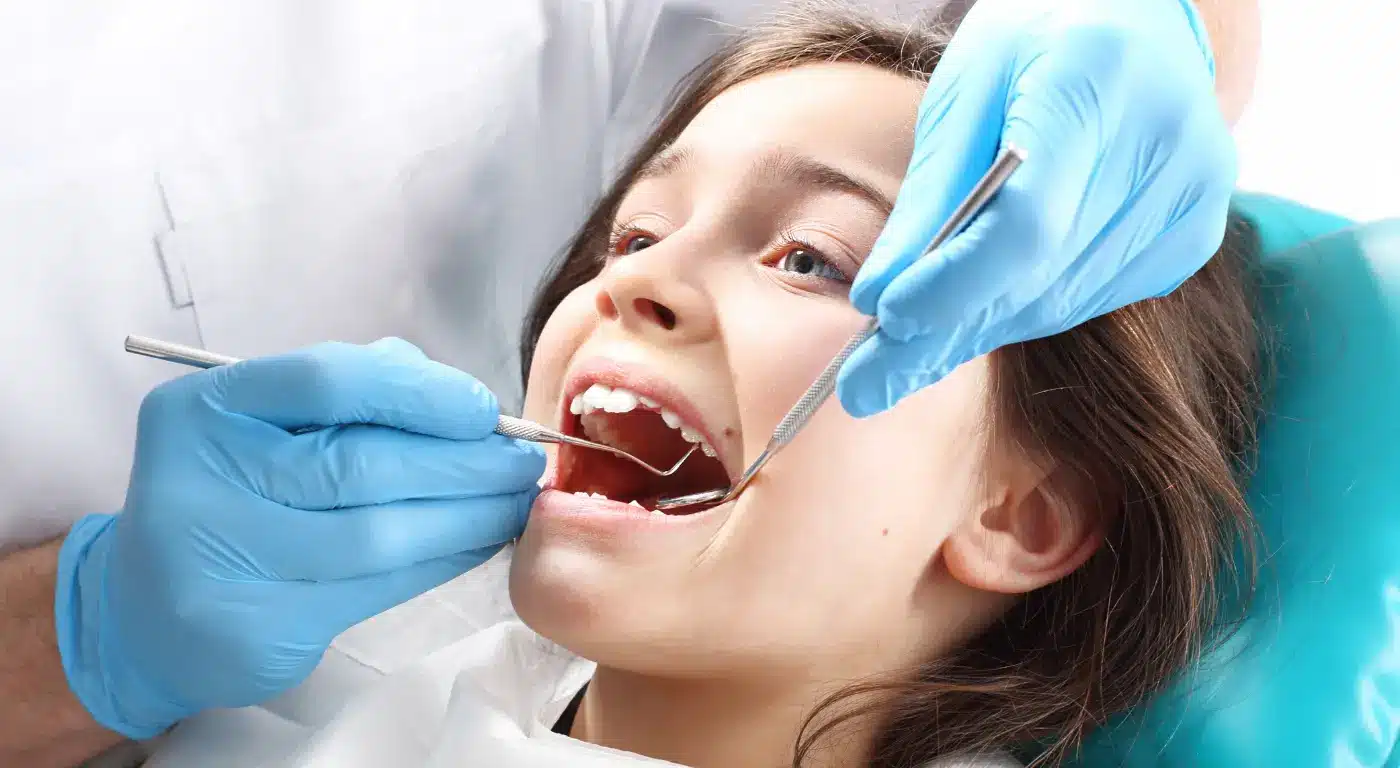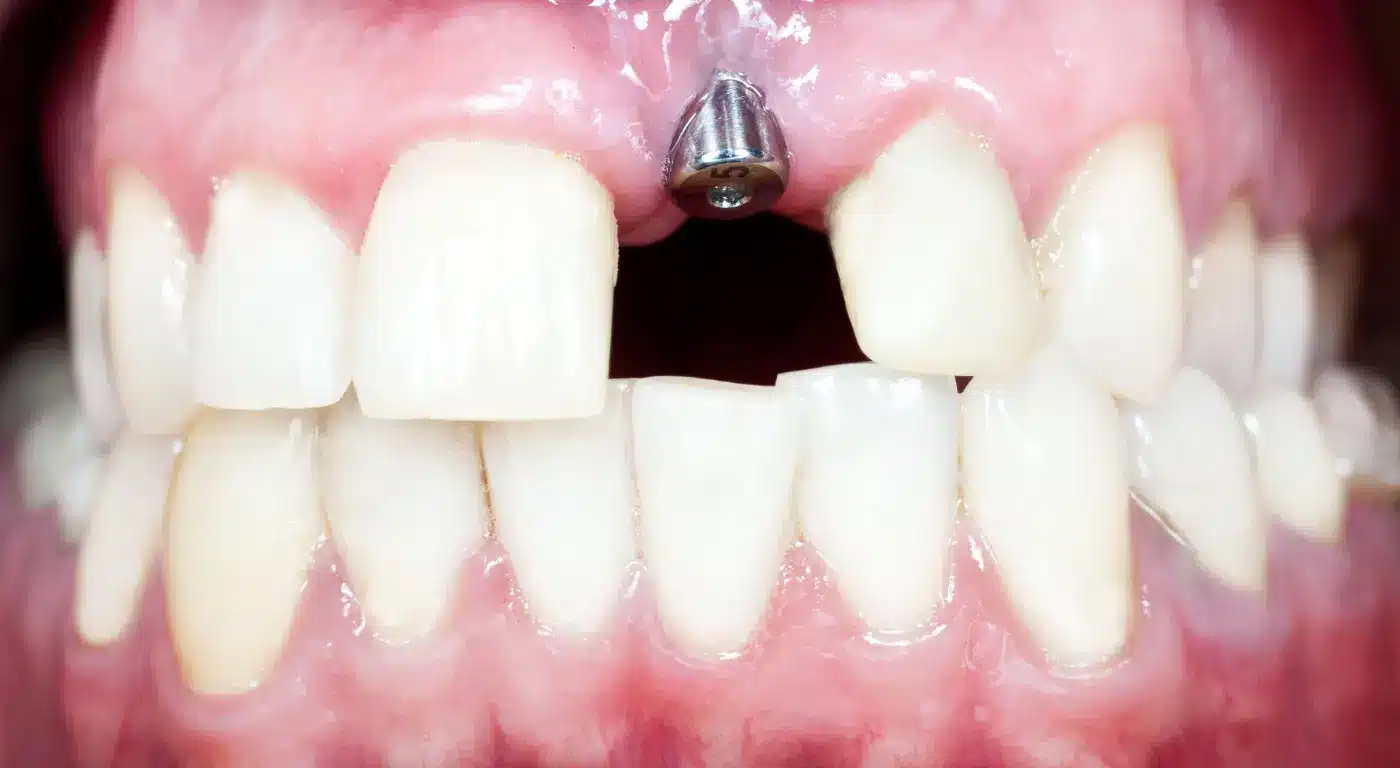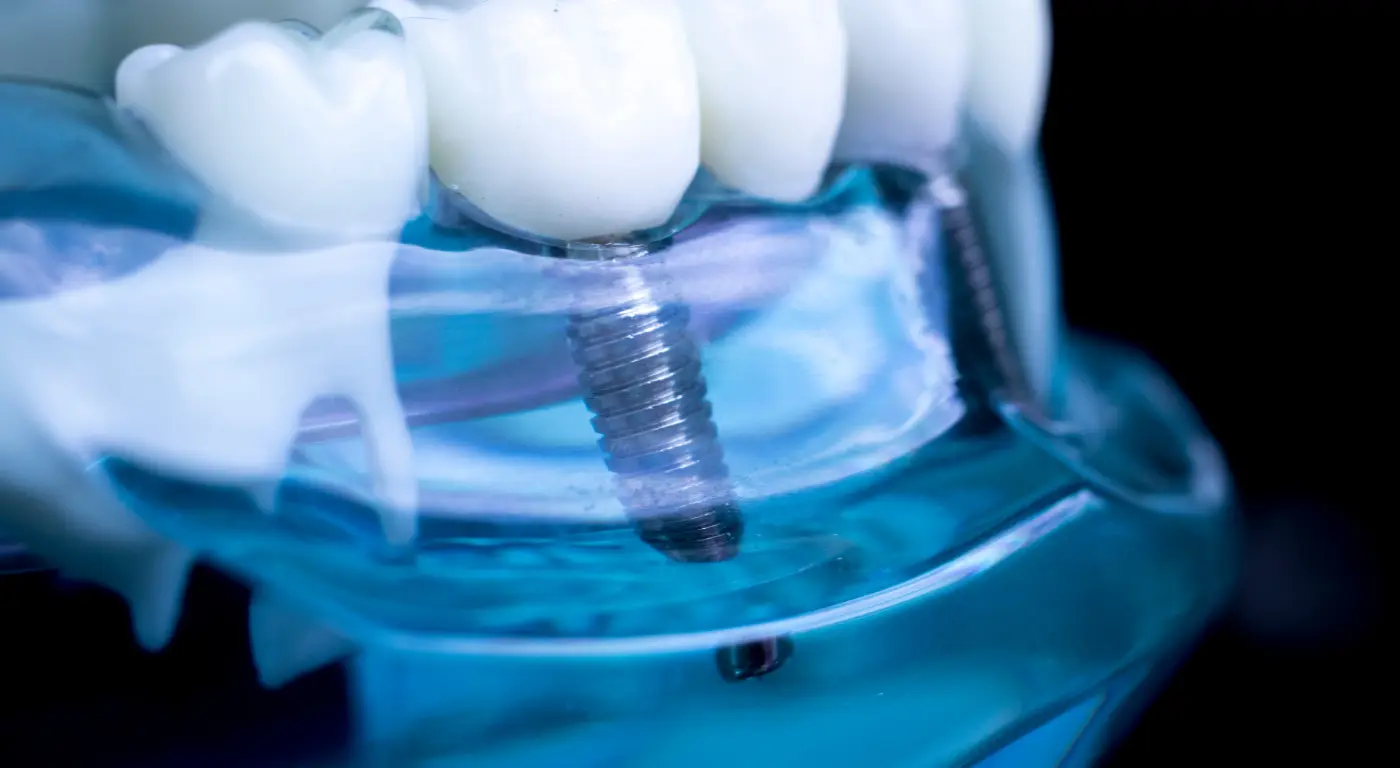Teenage Dental Implants After Sports Injuries: A Comprehensive Guide to Restoring Your Smile
Teenage dental implants after sports injuries are transforming the way we address tooth loss and oral rehabilitation in young athletes. As teenagers engage in various high-impact sports, they often face dental trauma that results in chipped, fractured, or even lost teeth. In such cases, dental implants can offer a permanent, functional, and aesthetically pleasing solution. However, implant procedures in teenagers come with unique challenges due to their ongoing growth, the complexity of sports-related injuries, and the need for customized treatment plans. This article provides a comprehensive guide on the topic, detailing the process, benefits, challenges, and considerations of teenage dental implants after sports injuries. By understanding these aspects, patients, parents, and dental professionals can make informed decisions to restore a healthy, confident smile.

The Impact of Sports Injuries on Teenage Oral Health
Sports are an integral part of teenage life, but they also come with risks—especially for oral health. Teenage dental implants after sports injuries are often considered when traditional restorative treatments are not viable due to severe trauma. Sports-related dental injuries can include:
- Tooth Fractures: Impact from a collision or fall can cause teeth to crack or break.
- Avulsions: In some cases, a tooth may be completely knocked out.
- Soft Tissue Injuries: Injuries to the gums and surrounding tissues that affect overall oral health.
- Bone Loss: Trauma can lead to alveolar bone damage, complicating restorative options.
Studies have shown that sports-related dental injuries account for a significant percentage of dental emergencies in teenagers. For instance, research indicates that up to 30% of high school athletes experience some form of dental trauma during the sports season. The consequences of these injuries extend beyond aesthetics—they can impact chewing, speech, and overall quality of life. Therefore, prompt and effective treatment is crucial, especially when considering long-term solutions like dental implants for teenagers.
Why Choose Dental Implants for Teenagers?
Dental implants are considered the gold standard for replacing missing teeth. For teenagers, the benefits of dental implants after sports injuries include:
- Permanent Restoration: Unlike removable dentures or bridges, implants provide a fixed solution that mimics natural teeth.
- Improved Functionality: Implants restore chewing efficiency and enhance speech, contributing to better nutrition and self-confidence.
- Aesthetic Excellence: Modern implant technology offers highly natural-looking results that blend seamlessly with existing teeth.
- Bone Preservation: Implants stimulate the jawbone, preventing further bone loss—a critical factor in growing individuals.
While implants have proven benefits, they require careful planning in teenage patients. Factors such as ongoing jaw growth, hormonal changes, and individual oral health status must be considered to ensure long-term success.
Challenges in Implementing Dental Implants in Teenagers
Despite the clear benefits, there are several challenges to consider when opting for teenage dental implants after sports injuries:
1. Ongoing Growth and Development
Teenagers are still growing, and their jawbones are not fully mature. Placing an implant too early can interfere with natural growth, leading to misalignment or implant failure later on. Dentists must carefully assess skeletal maturity and choose the optimal timing for implant placement.
2. Bone Density and Quality
Sports injuries can result in bone loss or damage, particularly in cases of severe trauma. Adequate bone volume and quality are essential for the osseointegration of dental implants. In some cases, additional procedures, such as bone grafting, may be necessary; however, alternative, less invasive methods are preferable in younger patients.
3. High Functional Demands
Teenagers often lead active lifestyles, which put additional stress on dental restorations. The implants must be robust enough to withstand high-impact activities and normal wear and tear while still providing optimal function.
4. Psychological Considerations
The emotional impact of losing a tooth at a young age can be significant. Restorative treatments should not only focus on physical rehabilitation but also address the psychological and social aspects, ensuring that teenagers regain their confidence and self-esteem.

The Step-by-Step Process of Teenage Dental Implants After Sports Injuries
Implementing dental implants for teenagers after sports injuries involves a multi-stage process designed to address both clinical and aesthetic needs. Below is a detailed look at each phase:
Step 1: Initial Consultation and Assessment
A comprehensive evaluation is the first step in the treatment process. During this consultation:
- Medical and Dental History: The dentist reviews the patient’s medical records, including details of the sports injury and any previous dental treatments.
- Digital Imaging: High-resolution digital X-rays and 3D scans are taken to assess the jawbone’s condition and the extent of any bone loss.
- Facial Analysis: Using digital smile design software, the dentist evaluates the patient’s facial structure, dental alignment, and overall aesthetics.
- Discussion of Goals: The patient (and their guardians, if applicable) discuss their desired outcomes and any concerns, ensuring a personalized treatment plan is developed.
Step 2: Customized Treatment Planning
With all diagnostic data in hand, the dental team creates a custom treatment plan tailored specifically for the teenage patient. This plan outlines:
- Implant Placement Strategy: Deciding on the best location and number of implants needed, taking into account the patient’s bone density and growth potential.
- Restorative Options: Choosing between different types of restorations, such as crowns or bridges, that will best match the patient’s natural teeth.
- Timing Considerations: Determining the optimal time for implant placement based on the patient’s skeletal maturity and overall oral health.
- Risk Management: Addressing potential complications related to previous sports injuries and the challenges of implant placement in a growing individual.
Step 3: Surgical Procedure
On the day of the procedure, a carefully planned surgical process is followed:
- Anesthesia and Sedation: Local anesthesia is administered to ensure the patient is comfortable during the procedure. In cases of high anxiety, mild sedation may be used.
- Precise Implant Placement: Using computer-guided surgery and digital planning, the implant is accurately placed into the jawbone. This minimizes trauma and ensures proper alignment with the natural teeth.
- Immediate or Delayed Loading: Depending on the stability of the implant and the patient’s condition, a temporary restoration may be attached immediately, or the implant may be left to integrate with the bone for a few months before loading.
Step 4: Post-Operative Care and Follow-Up
Post-operative care is critical to the success of dental implants for teenagers:
- Medication and Pain Management: Prescribed medications help manage discomfort and reduce the risk of infection.
- Oral Hygiene Instructions: The patient is given detailed instructions on how to maintain oral hygiene around the implant site, including the use of a soft-bristled toothbrush and antiseptic mouth rinses.
- Regular Follow-Up Appointments: Scheduled visits allow the dental team to monitor healing and make any necessary adjustments. These appointments are crucial for ensuring that the implant integrates properly and that the restoration functions as intended.
- Diet and Activity Guidelines: Patients are advised to avoid hard or sticky foods during the initial healing period, and they are given guidelines on resuming sports activities safely.
Step 5: Long-Term Maintenance
The journey to a restored smile doesn’t end with the implant surgery. Long-term maintenance ensures the longevity of the treatment:
- Routine Dental Check-Ups: Regular dental visits are essential to monitor the health of the implant and surrounding tissues.
- Effective Oral Care: Continued use of proper brushing, flossing, and mouthwash is critical to prevent plaque buildup and maintain oral health.
- Lifestyle Adjustments: Encouraging a healthy lifestyle, including a balanced diet and avoidance of harmful habits like smoking, can further enhance implant longevity.
Comparative Analysis: Implants vs. Other Restoration Options for Teenagers
When considering dental restoration after sports injuries, it’s important to compare dental implants for teenagers with other conventional options such as bridges and dentures. The following table provides a comparative analysis:
| Factor | Dental Implants | Bridges | Dentures |
|---|---|---|---|
| Stability | Fixed and stable | Relies on adjacent teeth; can be unstable | Removable; often less secure |
| Aesthetics | Natural look; integrates with bone | Natural appearance, but may require reshaping | Less natural; may affect speech and chewing |
| Functionality | Functions like natural teeth | Good functionality if adjacent teeth are healthy | Can impair chewing and speech if poorly fitted |
| Longevity | Can last a lifetime with proper care | Typically lasts 5-15 years | Requires periodic replacement |
| Surgical Requirements | Invasive; requires surgery | Non-surgical | Non-surgical |
| Maintenance | Low maintenance post-healing | Requires cleaning of abutment teeth | Needs regular adjustment and cleaning |
This analysis demonstrates that while dental implants involve surgery, they offer superior stability, aesthetics, and long-term functionality—making them an ideal choice for active teenagers recovering from sports injuries.
The Role of Digital Technology in Teen Dental Implant Procedures
Digital technology has revolutionized the planning and execution of dental implants, especially in teenagers. Advanced imaging tools such as 3D scanners, intraoral cameras, and computer-guided surgery are integral to ensuring the success of these procedures. Here’s how digital technology enhances outcomes:
- Precision and Accuracy: Digital planning allows for the precise placement of implants, minimizing errors and ensuring that the implant aligns perfectly with the natural teeth.
- Customized Treatment Plans: Using Digital Smile Design (DSD), dentists can create a personalized plan that visualizes the expected outcome, helping teenagers and their parents make informed decisions.
- Reduced Surgical Time: With computer-guided techniques, the surgical procedure is streamlined, reducing the overall time under anesthesia and promoting faster recovery.
- Enhanced Patient Communication: Digital tools enable dentists to show patients a preview of their new smile, reducing anxiety and building trust in the treatment process.

Benefits of Dental Implants for Teenagers After Sports Injuries
For teenagers, the benefits of choosing dental implants as a restorative option after sports injuries are numerous:
1. Restored Functionality and Aesthetics
Dental implants provide a permanent solution that restores both the function and appearance of missing teeth. This is particularly important for teenagers who are active in sports and social activities, as a stable and natural-looking implant can significantly boost confidence.
2. Long-Term Oral Health
Implants help preserve the jawbone by stimulating natural bone growth, preventing further bone loss—a critical factor in growing individuals. This not only improves the stability of the implant but also supports overall oral health.
3. Improved Quality of Life
A well-placed dental implant can improve chewing efficiency, speech, and overall quality of life. Teenagers can return to their favorite sports and social activities without worrying about the discomfort or inconvenience associated with removable prosthetics.
4. Boosted Self-Esteem
Losing a tooth can be emotionally challenging, especially during adolescence. Dental implants offer a permanent, reliable solution that can restore a natural smile and significantly enhance self-esteem.
Addressing Concerns and Myths
Despite their many advantages, dental implants for teenagers sometimes face skepticism. Here, we debunk common myths:
Myth: “Dental implants are too invasive for teenagers.”
Reality: While implant surgery is a surgical procedure, advancements in digital planning and minimally invasive techniques have made it a safe and effective option for carefully selected teenage patients.
Myth: “Bridges or dentures are better for growing individuals.”
Reality: Dental implants offer superior stability and promote bone health, making them a more permanent and effective solution compared to bridges or removable dentures, especially in active teenagers.
Myth: “The healing time is too long.”
Reality: With modern techniques, healing times have been significantly reduced. Digital planning and computer-guided surgery have optimized the procedure to ensure a faster recovery, even in teenagers.
Patient Testimonials and Success Stories
Numerous success stories illustrate the life-changing benefits of dental implants for teenagers after sports injuries. For instance, consider the case of Alex, a 16-year-old athlete who lost a front tooth during a soccer match. With a custom treatment plan and the use of digital imaging for precise implant placement, Alex underwent a successful procedure that restored not only his smile but also his confidence. His rapid recovery and natural-looking restoration allowed him to quickly return to the field and to social activities.
Another inspiring story is that of Maria, a 17-year-old who experienced significant dental trauma during a basketball game. After a comprehensive evaluation and careful planning, she received dental implants that integrated seamlessly with her natural teeth. Maria now sports a restored smile that has transformed her self-esteem and helped her focus on her athletic and academic goals.

Best Practices for Implant Success in Teenagers
Pre-Operative Planning
- Comprehensive Evaluation:
Conduct detailed examinations, including digital X-rays and 3D scans, to assess the patient’s bone density and oral structure. - Customized Treatment Plan:
Develop a personalized plan that takes into account the patient’s unique dental needs, growth patterns, and aesthetic goals. - Parental Involvement:
Engage parents or guardians in the consultation process to ensure informed consent and long-term support.
Intra-Operative Techniques
- Computer-Guided Surgery:
Use advanced digital planning tools to precisely position the implant, ensuring optimal stability and aesthetic integration. - Minimally Invasive Procedures:
Employ flapless or minimally invasive surgical techniques to reduce trauma and promote faster healing. - Real-Time Monitoring:
Utilize digital technology to monitor the procedure and adjust the treatment plan as needed.
Post-Operative Care and Long-Term Maintenance
- Regular Follow-Up Visits:
Schedule frequent check-ups to monitor healing, assess implant stability, and address any complications promptly. - Strict Oral Hygiene:
Encourage patients to adhere to a rigorous oral care routine that includes gentle brushing, flossing, and the use of antiseptic mouth rinses. - Lifestyle Recommendations:
Advise on dietary habits and activity restrictions during the recovery period, emphasizing the importance of avoiding hard or sticky foods.
The Role of Digital Technology in Modern Implant Dentistry
Digital technology is the backbone of modern dental implant procedures, particularly for teenagers. With tools like Digital Smile Design (DSD), 3D imaging, and computer-guided surgery, dentists can:
- Visualize Outcomes: Provide patients with a clear, digital preview of the expected results.
- Ensure Precision: Accurately plan the implant placement to match the patient’s anatomy.
- Reduce Risks: Minimize surgical errors and enhance recovery through minimally invasive techniques.
Future Trends in Teen Dental Implants After Sports Injuries
The landscape of dental implantology continues to evolve, with future trends promising even greater advancements:
- Smart Implants:
Emerging technology may soon integrate sensors within implants to monitor bone integration and detect complications early. - AI-Driven Treatment Planning:
Artificial intelligence will further refine treatment plans, tailoring them to individual patient profiles for enhanced outcomes. - Regenerative Materials:
Ongoing research into bioactive materials may lead to implants that actively promote bone regeneration, further improving implant stability and longevity. - Improved Patient Experience:
Enhanced digital tools and minimally invasive techniques will continue to reduce treatment times and improve patient comfort, making dental implants even more accessible for teenagers.
Teenage dental implants after sports injuries are not just a cosmetic solution—they represent a transformative approach to restoring function, confidence, and overall oral health in young athletes. With the advent of advanced digital technology, customized treatment plans, and minimally invasive surgical techniques, dental implants offer a permanent and natural-looking solution to the challenges posed by sports injuries. By addressing the unique needs of teenage patients, these innovative procedures provide a safe and effective path to long-term success.
If you or your child has suffered a sports injury resulting in tooth loss, know that you have options. With proper planning, advanced technology, and a patient-centered approach, dental implants for teenagers can restore not only smiles but also confidence and quality of life.
Are you ready to explore the best dental implant solutions for teenagers after sports injuries? Contact Smile Design NJ today to schedule a personalized consultation. Our expert team is dedicated to providing state-of-the-art, minimally invasive implant procedures that cater to the unique needs of young athletes. Your journey to a restored, confident smile begins here!











